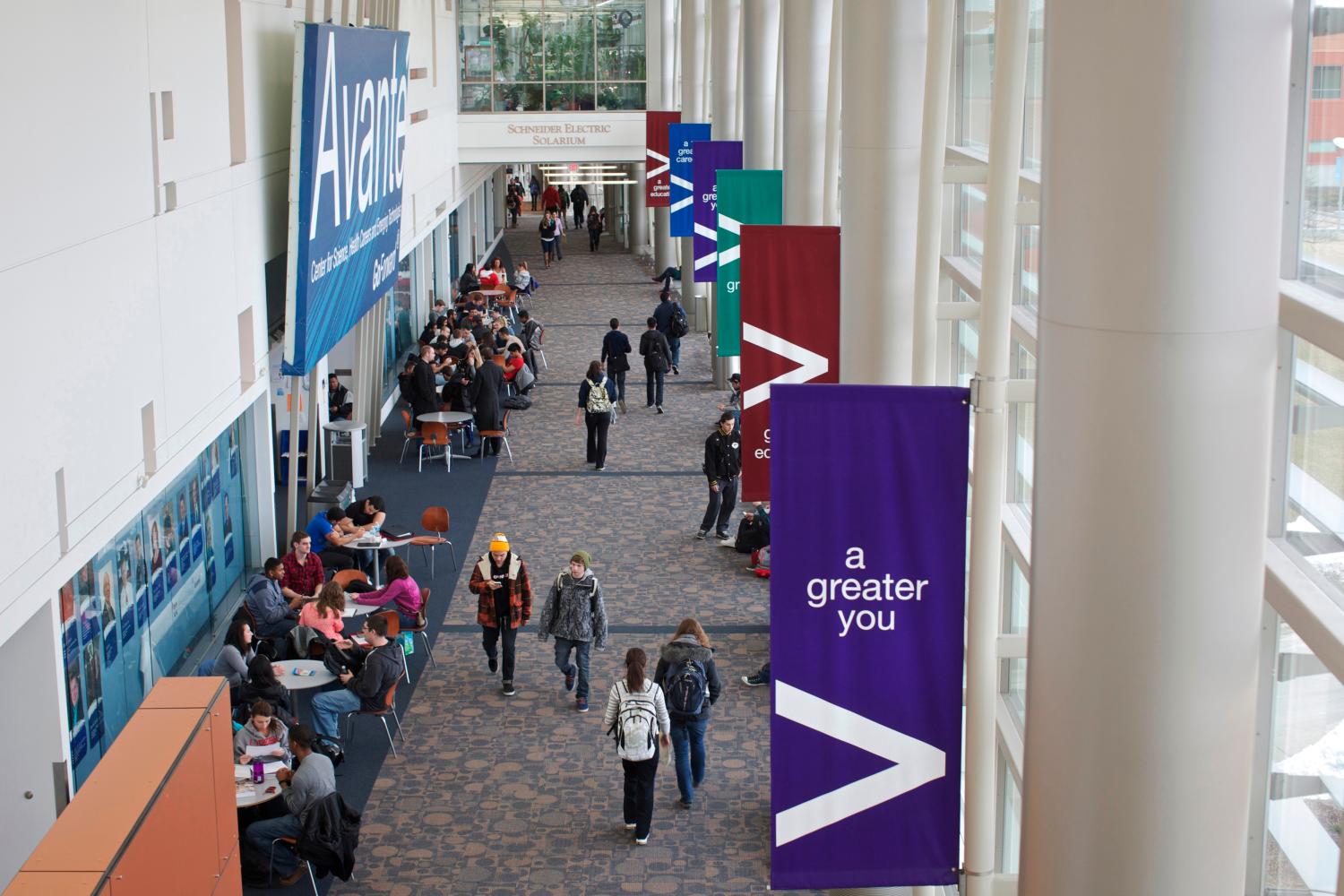America’s community colleges offer the promise of a more affordable pathway to a bachelor’s degree. Students can pay substantially less for the first two years of college, transfer to a four-year college or university, and still earn their diploma in the same amount of time. At least in theory. Most community college students—80 percent of them—enter with the intention to transfer, but only 20 percent actually do so within five years of entering college. This divide represents a classic case of what behavioralists call an intention-action gap.
Why would so many students who enter community colleges intending to transfer fail to actually do so? Put yourself in the shoes of a 20-something community college student. You’ve worked hard for the past couple years, earning credits and paying a lot less in tuition than you would have if you had enrolled immediately in a four-year college or university. But now you want to transfer, so that you can complete your bachelor’s degree. How do you figure out where to go? Ideally you’d probably like to find a college that would take most of your credits, where you’re likely to graduate from, and where the degree is going to count for something in the labor market. A college advisor could probably help you figure this out, but at many community colleges there are at least 1,000 other students assigned to your advisor, so you might have a hard time getting a quality meeting. Some states have articulation agreements between two- and four-year institutions that guarantee admission for students who complete certain course sequences and perform at a high enough level. But these agreements are often dense and inaccessible.
The combination of big data and behavioral insights has the potential to help students navigate these complex decisions and successfully follow through on their intentions. Big data analytic techniques allow us to identify concrete transfer pathways where students are positioned to succeed; behavioral insights ensure we communicate these options in a way that maximizes students’ engagement and responsiveness.
The transfer decision is of course only one of many such challenges students and families face in education, where information to help people make informed choices is theoretically available, but often complex and poorly communicated. Parents of toddlers in many states can now access early childcare rating information through Quality Rating Improvement Systems, but in most locations these systems have low visibility. High school students in many schools have a range of courses available to them, but they may not get sufficient counseling on which course sequences best position them for postsecondary education.
A growing body of innovative research has demonstrated that, by applying behavioral science insights to the way we communicate with students and families about the opportunities and resources available to them, we can help people navigate these complex decisions and experience better outcomes as a result. A combination of simplified information, reminders, and access to assistance have improved achievement and attainment up and down the education pipeline, nudging parents to practice early-literacy activities with their kids or check in with their high schoolers about missed assignments, and encouraging students to renew their financial aid for college.
Big data analytic techniques have the potential to contribute to a next generation of behavioral science interventions in education—strategies that help people overcome complex matching problems like the transfer decision by giving personalized information about educational pathways that both build on the students’ prior experience and best position them for future success. Think of this as Netflix’s movie recommendation algorithm applied to education. There have already been some initial ventures in this direction. In one seminal study, researchers capitalized on student-level academic achievement data from the College Board and publicly-available data on college characteristics to send high-achieving, low-income students semi-customized packets of high-quality colleges and universities where students had a good chance of being admitted based on their academic performance. But there’s also real potential for much greater personalization.
Take a community college student’s transfer decision as an example. Working with a state higher education system, researchers and data scientists could use a combination of articulation agreements and data from prior cohorts of students to identify optimal transfer pathways for different student groups and course-taking histories. Using data on current students’ course-taking experiences and contact information they provide to their college, the system could proactively send students messages that identifies specific institutions where they have already met the transfer requirements, or where they are on track to do so, and where prior cohorts of students from their same college have been successful upon transferring. Behavioral scientists can help design this outreach in a way that maximizes student engagement and responsiveness.
These types of big data techniques are already being used in some education sectors. For instance, a growing number of colleges use predictive analytics to identify struggling students who need additional assistance, so faculty and administrators can intervene before the student drops out. But frequently there is insufficient attention, once the results of these predictive analyses are in hand, about how to communicate the information in a way that is likely to lead to behavior change among students or educators. And much of the predictive analytics work has been on the side of plugging leaks in the pipeline (e.g. preventing drop-outs from higher education), rather than on the side of proactively sending students and families personalized information about educational and career pathways where they are likely to flourish.
From pre-K through college, students and families have to navigate one complex decision after another—about which schools to attend, what courses to take, which programs to apply for. These decisions are particularly daunting for socioeconomically-disadvantaged families who have less experience navigating complicated educational decisions and less access to professional advising. Families like these also have to devote a substantial portion of their cognitive bandwidth to just making ends meet financially. By leveraging big data techniques and behavioral science insights, we can help families identify educational opportunities that position them for ongoing success.
The Brookings Institution is committed to quality, independence, and impact.
We are supported by a diverse array of funders. In line with our values and policies, each Brookings publication represents the sole views of its author(s).





